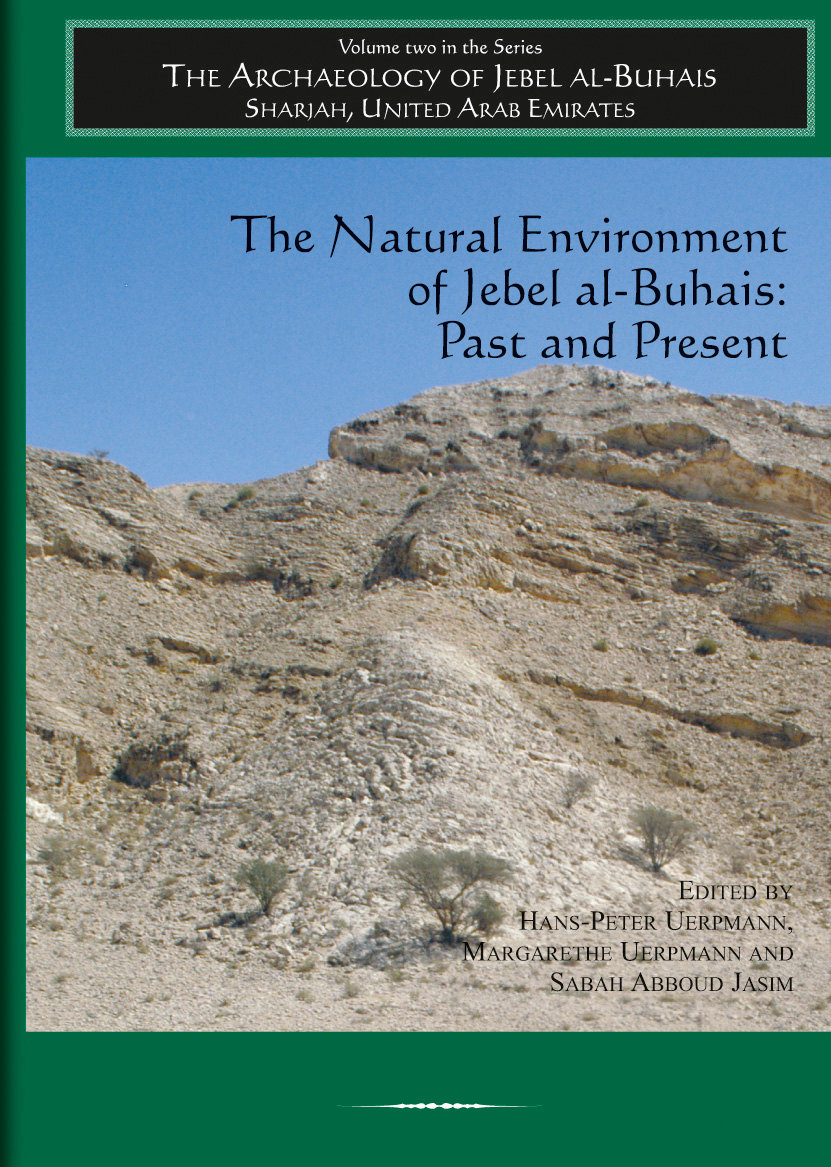Beschreibung
Inhaltsverzeichnis als PDF (englisch)
Archaeological sites are not scattered over a landscape at random. There is always a reason why they are where they are. This is particularly so in marginal environments where large parts of the landscape are hostile to human presence, as is the case throughout the desert areas of the world. With a site such as the Neolithic dwelling area and graveyard of al-Buhais 18 (BHS 18), it was essential that we consider all aspects of its environmental setting that could be accessed with the available scientific methods and through the evaluation of already existing knowledge gathered beforehand…
… On the whole, a significant amount of evidence extracted from the archaeological and environmental findings at al-Buhais has advanced our understanding of the complex system of human ingenuity interacting with natural resources, climatic conditions and a network of environmental advantages and constraints. At the present state of our knowledge the fossil spring near the site seems to be the prime reason for the site’s existence at this spot. Its position close to Wadi Yudayyah is another determining factor for its location, if our assumption is correct that the inhabitants of BHS 18 were pastoral nomads moving with their herds from the Gulf coast to the Hajar Mountains. In this case, the Neolithic shell middens in Sharjah City and near the Ajman and Hamriya lagoons, which surround the mouth of Wadi Yudaida, would probably have been the coastal sites of this nomadic group. The area around BHS 18 is well suited for a prolonged stay after a strenuous crossing of the sands, which would have taken at least two or three days without much water and pasture. From the Buhais area, the human groups may have continued their wanderings across the Inland Basin in a southeasterly direction, reaching the Hatta Gap in the Hajar Mountains, which would have allowed easy passage to the eastern coast or access to the longitudinal intra-mountain depressions farther south, and to the higher elevations of this landscape as well. The transhumance described above and in this volume may well have occurred in early spring, as indicated by the evidence provided by the faunal remains from BHS 18. Strangely, there is no evidence yet for an autumn occupation at the site. According to the model developed here, the Buhais area would also have been passed on the way back to the coast. If this assumption is correct, it would mean that no animals were killed at BHS 18, at least not in the area of the stone midden where the evidence was uncovered. As this midden seems to have been connected with funeral rites, and these in turn may have had a seasonal cycle as well, different forms of deposition of animal bone remains might be seen as a possible explanation for the lack of seasonal evidence for the postulated autumn-stay of the pastoral nomads at al-Buhais. Future research on molecular information in human and animal bone and teeth may improve our capability of reading and interpreting the environmental evidence in order to advance our understanding of the early history of this area. The present volume is dedicated to the publication of the environmental evidence on which our results are based.
– Hans-Peter Uerpmann
